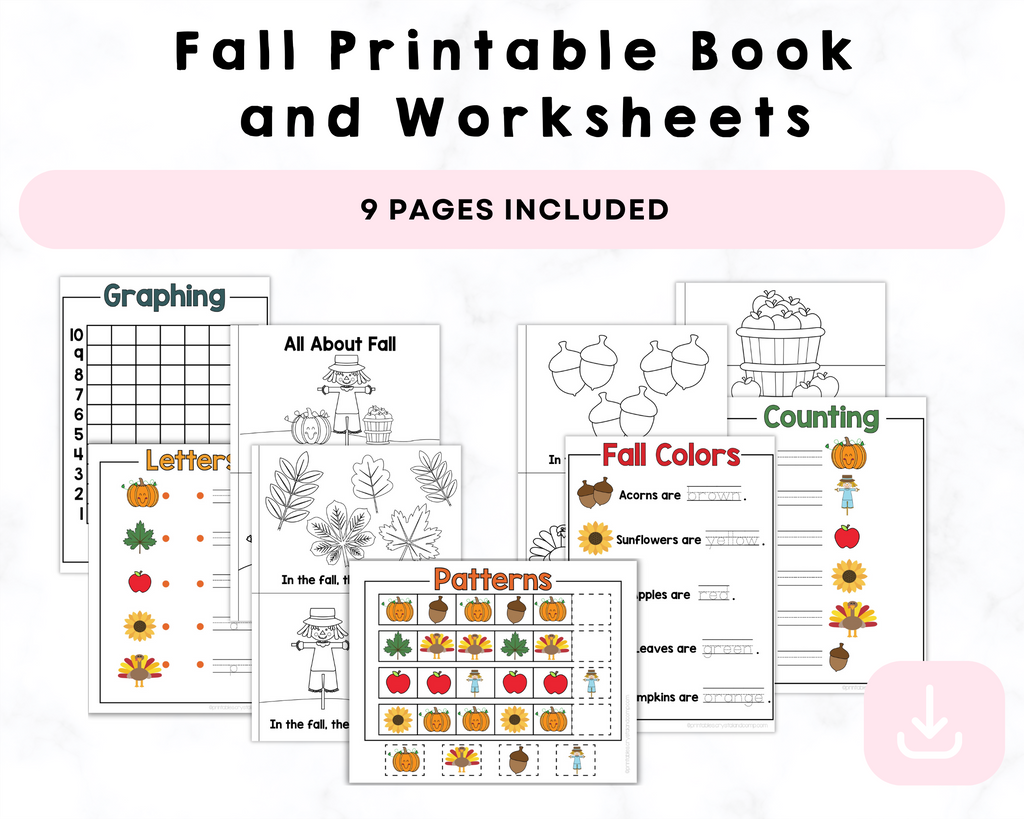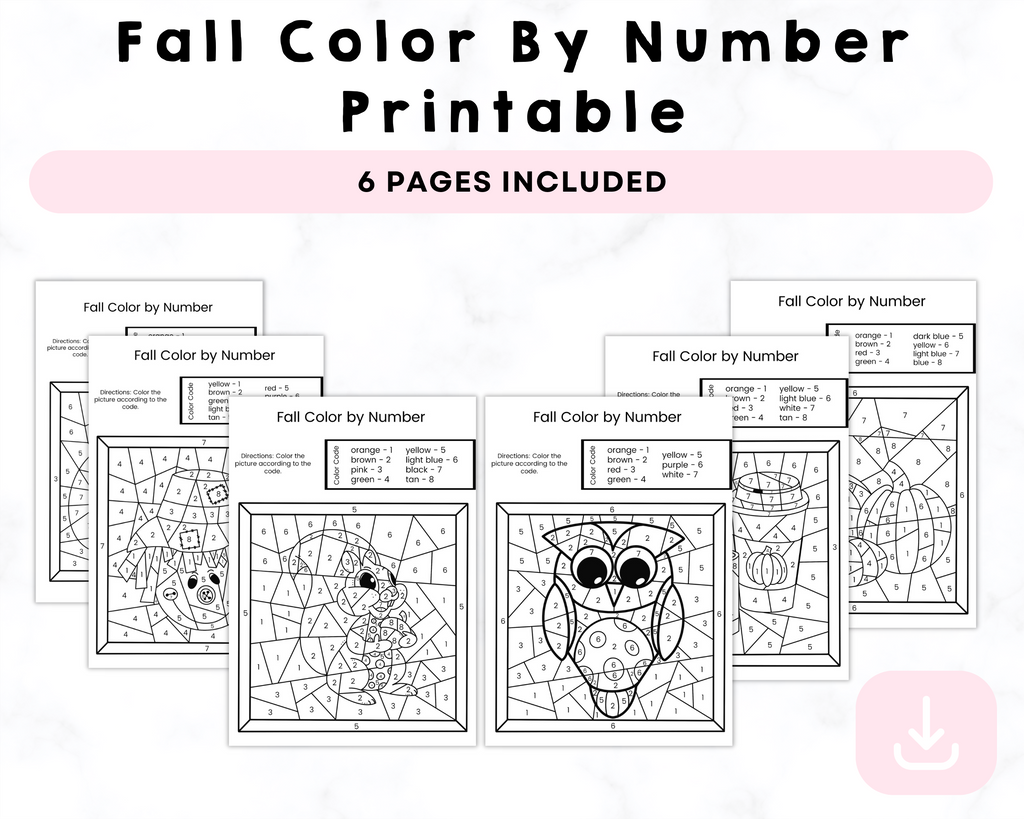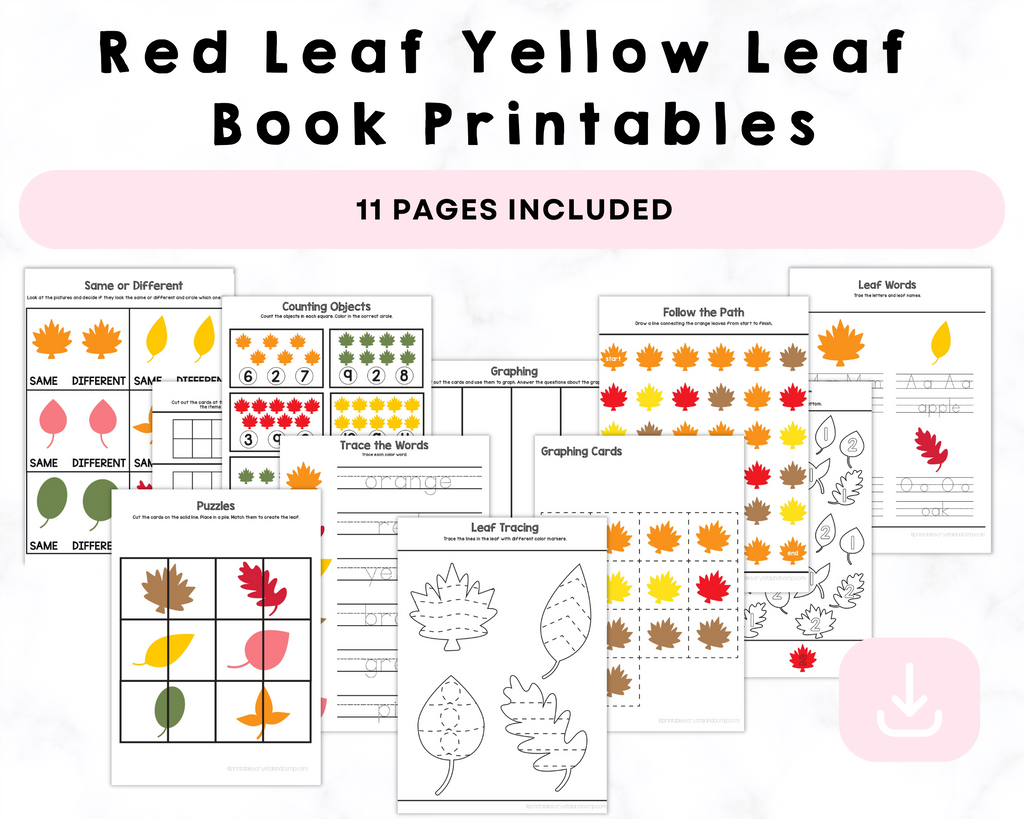Pumpkin Pie Printable Book
Welcome to our delightful Pumpkin Pie Printable Book designed particularly for preschoolers! In this fascinating book, we will take your little ones on a mouth-watering journey full of educational, interactive and entertaining experiences to teach them all about emotions, tracing, and the most important cognitive skills they need!
The early years of a child’s development are crucial as they lay the foundation for a lifetime of learning. This is why it is important to provide them with a stimulating environment that nurtures their curiosity and encourages exploration. One of the best ways to achieve this goal is by introducing them to the world of books. Reading not only develops their vocabulary and language skills but also fosters their cognitive and socio-emotional development. Free Printable Books for Preschoolers comes as a ray of hope and are a great resource for parents and caregivers who are looking for age-appropriate books that their little ones would enjoy.

How Do Printable Books Help Preschoolers Become Aware Of Print?
Printable books can be a great help in introducing preschoolers to the world of print and developing their awareness of letters, words and sentences. These books are designed to be easily printable and assembled, and they are often available online for free. By providing early readers with high-quality printable books, educators and parents can help children develop a lifelong love of reading and learning.
One huge advantage of printable books is that they can be customized to meet the unique needs and interests of each individual child. Parents and teachers can select books based on a child’s age, reading level, language preferences and subject matter interests, ensuring that the books are both engaging and challenging. Additionally, by participating in the creation and assembly of the books, children learn valuable skills such as sequencing, cutting, measuring, following directions, and even basic geography. Over time, as children become more familiar with the books and the process of putting them together, their confidence and independence will grow. Printable books serve as a powerful tool for promoting early literacy development and instilling a love of learning in children, setting the stage for a lifetime of success.

Another benefit of printable books is that they can be used to foster a stronger sense of connection between parents and children. As parents or teachers sit down with the child to read the printable books together, they are creating a special moment that reinforces the bond between adult and child. This quality time helps to build strong relationships, as well as encouraging the child’s reading habit. As adults read aloud to children, pointing to words and letters, they are also helping to develop the child’s basic literacy skills of phonics, alphabet recognition, and vocabulary acquisition. When children see print in a book, they are more likely to recognize it than if they were only exposed to it through electronic media. Printable books can also be used to encourage parents to spend quality time with their children, building a strong foundational relationship that will ultimately lead to better academic performance in school and greater success in life.
Swingline Stapler, Desktop Stapler, 25 Sheet Capacity, Optima 25 Reduced Effort, Blue/Gray (66404) 50,000 Staples, 10 Pack of 5,000 Count Standard Staples, 26/6, 1/4-inch, Chisel Point Tips, Jam Free Staples, Fits All Standard Desktop Office Staplers, Better Office Products
50,000 Staples, 10 Pack of 5,000 Count Standard Staples, 26/6, 1/4-inch, Chisel Point Tips, Jam Free Staples, Fits All Standard Desktop Office Staplers, Better Office Products Crayola Write Start Colored Pencils
Crayola Write Start Colored Pencils Ticonderoga My First Tri-Write Wood-Cased Pencils, Pre-Sharpened, 2 HB, With Erasers, Neon Colors, 12 Count
Ticonderoga My First Tri-Write Wood-Cased Pencils, Pre-Sharpened, 2 HB, With Erasers, Neon Colors, 12 Count Canon TS202 Inkjet Photo Printer, Black
Canon TS202 Inkjet Photo Printer, Black Hammermill Printer Paper, Premium Inkjet & Laser Paper 24 Lb, 8.5 x 11 – 1 Ream (500 Sheets) – 97 Bright, Made in the USA, 166140R
Hammermill Printer Paper, Premium Inkjet & Laser Paper 24 Lb, 8.5 x 11 – 1 Ream (500 Sheets) – 97 Bright, Made in the USA, 166140R
Scroll To The Bottom To Download!
Why Are Emotions Important In Child Development?
Emotions play a crucial role in child development as they assist in shaping and organizing a child’s experiences, beliefs, and behaviors. Emotional development in children begins at birth and continues throughout their lives, overlapping with other areas of development such as social, cognitive, and physical development. In fact, emotional development is foundational to every other aspect of child development.

Research has shown that emotional competence in children is related to many positive outcomes, such as academic success, positive relationships with peers, and reduced likelihood of mental health problems. Emotional competence involves the ability to identify, understand, and express emotions, as well as regulate them appropriately in different situations. Children who are emotionally competent can manage their emotions in ways that are socially acceptable and considerate of others’ feelings. Children with strong emotional competence are better able to cope with stress and challenges and tend to develop a more resilient and positive outlook on life. Parents, caregivers, and educators must support and encourage emotional development in children to ensure that they grow into well-adjusted and emotionally stable adults.
How Does Tracing Help Fine Motor Skills?
Tracing is an activity that involves reproducing a drawing or image by following its outline. This simple activity has been proven to be highly beneficial in developing fine motor skills, which are essential for everyday tasks such as writing, drawing, and using utensils. Tracing requires control over the hand’s small movements, building hand-eye coordination, and improving muscle strength and control over the fingers. Studies have suggested that regular tracing can help improve the precision and accuracy of writing, cutting, and other fine motor tasks.

Through tracing, an individual can develop their grip strength and refine their hand movements. When tracing, the pencil is held in the precise manner that promotes good handwriting and prevents hand fatigue. The repetitive motion of tracing also allows for the development of muscle memory, which can help the hand to instinctively remember which strokes to make when writing. As the individual traces over and over again, they build muscle strength and control in the muscles of their hand, wrist, and arm, which eventually translate into precise fine motor pattern movements in other skills. Tracing is an effective way of enhancing fine motor skills that would go on to improve handwriting, drawing, and other everyday tasks that require control over the hand’s small movements.
Tracing Activities For Preschoolers
Tracing activities can be a fun and educational exercise for preschoolers. It is a great way to develop their fine motor skills and hand-eye coordination. Tracing activities involve the use of pens and pencils to create shapes or letters, following a dotted line or pattern. Tracing activities also help children to improve their handwriting and writing speed.
- Fall Line Tracing Printables
- Football Line Tracing Printables
- Pumpkin Line Tracing for Preschoolers
- Turkey Line Tracing Printables
- Pumpkin Pie Line Tracing Printables

Does Coloring Improve Fine Motor Skills?
Fine motor skills are a crucial component of a child’s development, and can be defined as the ability to make precise movements with the smaller muscles in the hands, fingers and wrists. These skills are important for everyday tasks such as writing, buttoning clothing and tying shoelaces. Many parents and educators have long believed that coloring can be a beneficial activity for improving fine motor skills in children. In fact, there is research to suggest that coloring can indeed improve these skills.
Fall Printable Books and Worksheets Fall Color By Number Printable
Fall Color By Number Printable Red Leaf Yellow Leaf Book Printables
Red Leaf Yellow Leaf Book Printables
Coloring involves using various tools such as crayons, pencils and markers, and requires precise movements and hand-eye coordination. As children color, they are also developing their dexterity and grip strength. In addition, coloring can help children develop their focus and concentration, as they work to stay within the lines and choose appropriate colors for the images they are coloring. Different types of coloring activities can also contribute to overall motor skill development. For example, coloring in large spaces can help children develop gross motor skills, while coloring in smaller spaces can improve fine motor skills. It is clear that coloring can be a fun and effective way to support the development of fine motor skills in children.

It is worth noting that while coloring can be beneficial for developing fine motor skills, it is important that children engage in a variety of activities to support their overall development. Encouraging children to engage in other types of play, such as building with blocks or playing with sensory materials, can also help improve their coordination and dexterity. It is also important to keep in mind that every child develops at their own pace and in their own way. Parents and educators should be supportive of each child’s individual needs and allow them to explore a variety of activities that benefit their development. Through a combination of play, exploration, and targeted activities, children can develop the fine motor skills that they need to succeed in everyday life.
Fine Motor Skills Activities For Preschoolers
Fine motor skills are a crucial development milestone for preschoolers, as they form a foundation for many of the complex life skills in later years. Fine motor skills refer to the level of dexterity children possess in their hand muscles, allowing them to perform intricate hand movements like drawing, coloring, playing with playdough, writing, stringing beads, and cutting. Children with good fine motor skills have greater independence and are more confident in their abilities, giving them an advantage in school and life.
- Leaf Line Tracing Printables
- Pumpkin Scissor Skills Worksheets
- Thanksgiving Playdough Mats
- Turkey Trouble Craft
- Donut Fine Motor Activities

The Pumpkin Pie Printable Book is a wonderful tool for not only teaching children about the different types of emotions, but also enhancing their reading and comprehension skills. This comprehensive book is designed to engage young learners with its delightful illustrations and simple narrative.
If the printable box does not populate below, use this link instead to signup for the pumpkin pie theme printable book.









